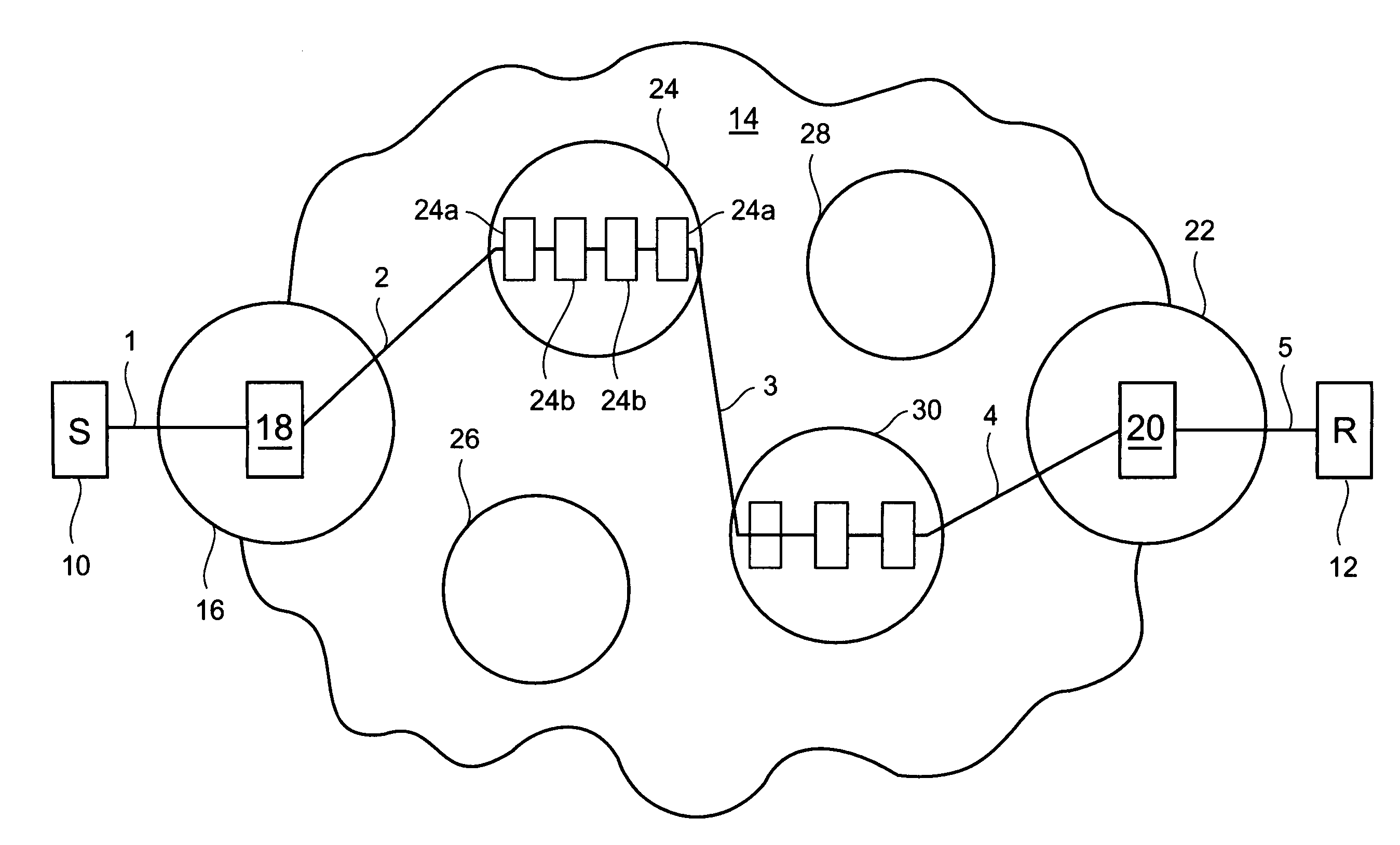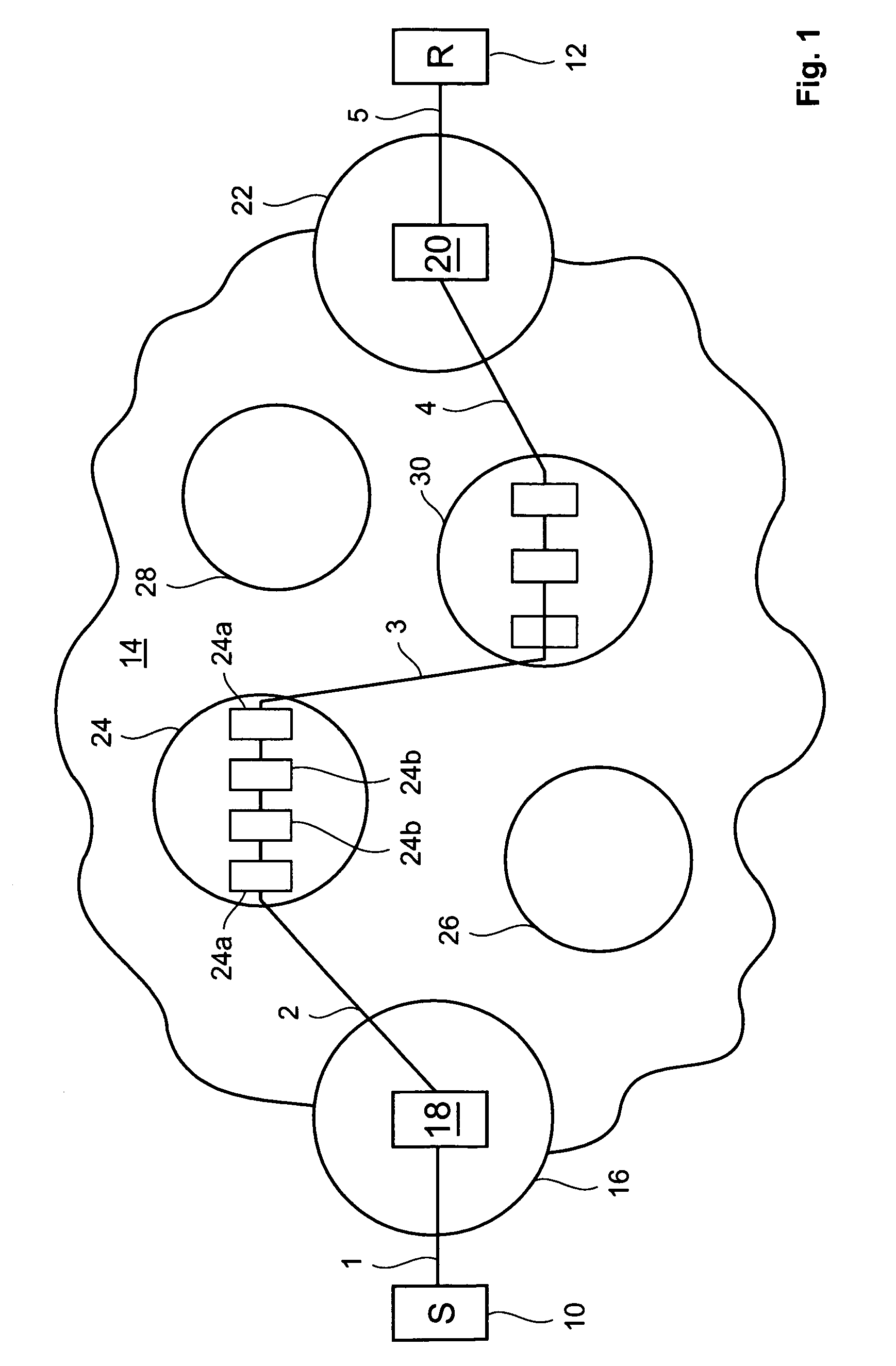Identifying a distributed denial of service (DDoS) attack within a network and defending against such an attack
packet data technology, applied in the field of identifying a distributed denial of service (ddos) attack within a packet data network and defending against such an attack, can solve the problems of threatening destroying the intended target, and affecting the stability of the internet itself, so as to mitigate and/or obviate the disadvantages associated, the effect of reducing the number of attacks
- Summary
- Abstract
- Description
- Claims
- Application Information
AI Technical Summary
Benefits of technology
Problems solved by technology
Method used
Image
Examples
Embodiment Construction
[0044] The present invention provides methods, apparatus and systems of detecting DDoS attacks at suitable points within the Internet which mitigates and / or obviates disadvantages associated with known detection systems, particularly Intrusion Detection Systems including Internet Firewalls as presently available. The present invention also provides novel means for implementing such a method. The present invention also provides method of more intelligently filtering received packets at a target network or the like which mitigates and / or obviates disadvantages associated with existing DDoS defence systems and to providing a means for implementing the method.
[0045] In another example embodiment, the invention provides a method of detecting a distributed denial of service (DDoS) attack in the Internet. The method comprises the steps of: sampling packets at a point in the Internet during a number of time intervals of a first predetermined time period to obtain data pertaining to the sou...
PUM
 Login to View More
Login to View More Abstract
Description
Claims
Application Information
 Login to View More
Login to View More - R&D
- Intellectual Property
- Life Sciences
- Materials
- Tech Scout
- Unparalleled Data Quality
- Higher Quality Content
- 60% Fewer Hallucinations
Browse by: Latest US Patents, China's latest patents, Technical Efficacy Thesaurus, Application Domain, Technology Topic, Popular Technical Reports.
© 2025 PatSnap. All rights reserved.Legal|Privacy policy|Modern Slavery Act Transparency Statement|Sitemap|About US| Contact US: help@patsnap.com



